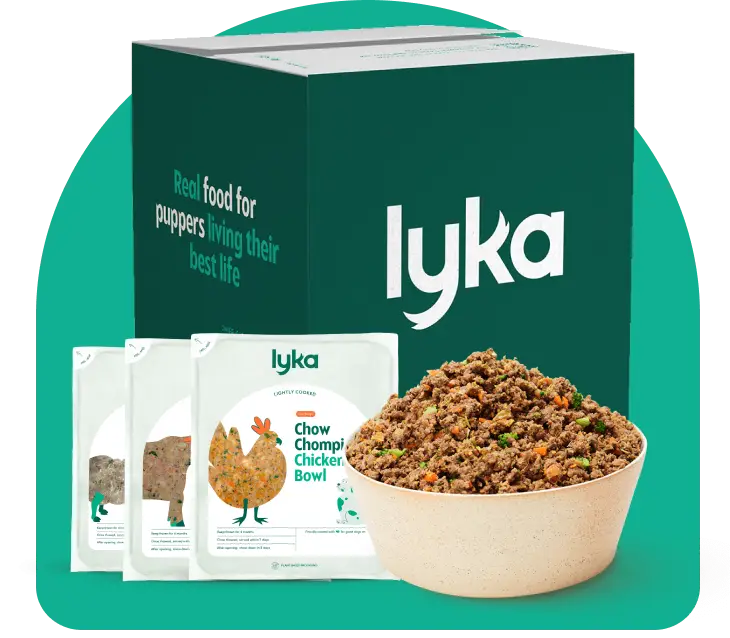Pet food palatants: why does kibble need them?
By Helene Mann

When it comes to choosing food for your dog, taste is one of the biggest factors – after all, what’s the point of picking the premium looking pack if your pup won’t eat what’s inside? So, with taste in mind, why do dogs seem to like kibble – the dry and processed pellets that are cooked to a very high temperature and contain so little animal protein. How could they possibly taste good?
The answer lies in palatants, the chemical coatings that are added to kibble to make up for the loss of flavour that occurs through processing.
Where did palatants come from?
First, let’s wind the years back and take a look at how kibble started. There was a time when dogs were mainly fed table scraps or canned food, both of which were mostly meat. Then World War 2 started, bringing with it restrictions on using tins and, hey presto, dry food was born. Manufacturers loved it because it was easy to make using by-products of the emerging industry of human processed food, and best of all it could be mass produced. Dog owners liked the cleanliness and convenience of dry food, which could be stored for long periods without spoiling, and was less messy to serve, so dry food stuck around, as is now one of the most common forms of dog food.
How do palatants work?
Processing leaves kibble almost tasteless, so not too many dogs would choose to eat it. To compensate for the very low meat content, pet food manufacturers add grains, legumes and other starchy ingredients in large volumes – which also lessens the food’s appeal.
Here’s how they work:
Pet food companies coat kibble with chemical sprays and powders that appeal to a pup’s taste and smell
Your pup’s sense of taste is not as strong as yours, but they have a far more sensitive sense of smell, which is why they typically prefer wet food that has a stronger smell – and why manufacturers create strong-smelling kibble
Palatants can mimic different flavours – look at the label of ‘beef’ dry food and you’ll normally see that it contains not only beef but other proteins, usually disguised as ‘meat meal’ or ‘poultry meal’
The difference between a beef and a chicken recipe normally has more to do with the palatant than the content of the kibble itself – while there might be a slightly higher proportion of the named protein, it’s usually the palatant that gives the kibble its meaty smell and taste
Why doesn’t fresh food need palatants?

Fresh food has a much higher proportion of meat than kibble and it therefore smells naturally of meat! Most kibble is only about 20 – 30% meat with a high proportion of grains, while Lyka contains over 50% meat. That’s not the only reason fresh food doesn’t need palatants:
Fresh food has minimal processing so that it retains far more flavour than kibble – your dog can actually taste what’s going into their food
The high moisture content in fresh food means your dog more readily detects the flavour of the food – moisture is needed for tastebuds to work, so fresh food doesn’t just rely on your pup’s saliva to be tasted
Transitioning to palatant-free food
There can be challenges when dogs transition to palatant-free food. They may have got used to artificial palatants, despite being inferior to fresh smelling ingredients. Palatants are specifically designed to mimic scents like rotting meat which may sound disgusting to us, but happens to be a scent that our puppers may like! Some dogs are just instinctively wary of new foods – it’s a survival tactic so they stick to food they know is safe.
Here are some useful tips:
Be patient and persevere. It’s the key to getting a dog used to food without palatants. It may take longer than you think to get your dog loving their new food, but that’s okay! Slow down their transition period and keep mixing it with their old food until they get used to their new healthier food.
Puppies in particular may be more scared of trying new foods, so make the transition slow and gentle so that they can get used to the new taste and texture of their fresh food.
Try heating up the food a little, which makes it smell stronger and may be more appealing for your pupper – heat gently in a pan or in the microwave after removing from the pouch.
Above all, fresh food is naturally tasty, whereas dry food is made to appeal to your dog’s sense of smell through artificial means. Fresh food tastes good because it’s full of healthy ingredients, plus more of the real meat that your dog loves to eat.
Great tasting Lyka – without additives
Lyka fresh food is packed with healthy ingredients so there’s no need for artificial palatants to trick your pupper into eating their meals. It’s naturally tasty!
Lyka food is high in meat protein.
Our meals have the ideal balance of nutrients such as amino acids, and are free from anti-nutrients found in other diets that may be linked to heart disease.
All Lyka food is human grade, so you know your pup is getting high quality ingredients. You also know exactly what goes into every pouch – just look at our ingredient lists.
Want to try giving our tasty, fresh meals to your dog? Click below to build your customised Starter Box today.







